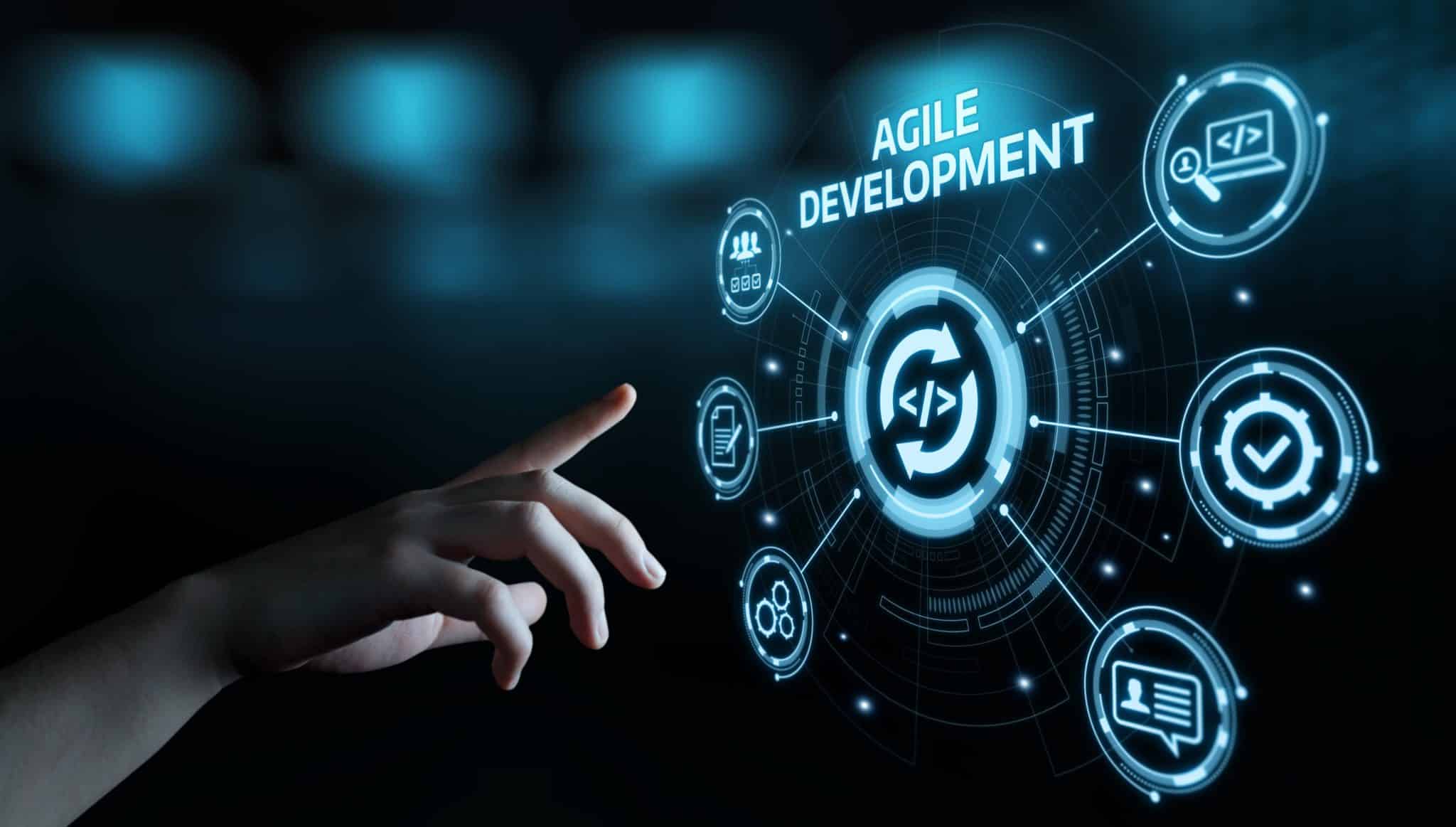The debate between Agile vs. Waterfall software development methods is one that has been around for years. There are pros and cons to each method, and ultimately it comes down to what is best for your specific business needs.
In this post, we will compare two different methodologies: Agile vs. Waterfall software development.
We’re going to dive deep into the differences (the good, the bad, and the ugly).
Within each section, we will go over:
- The Key Differences Between Agile & Waterfall
- The Agile Methodology
- The Waterfall Methodology
- The Advantages of Waterfall
- The Advantages of Agile
- The Disadvantages of Waterfall
- The Disadvantages of Agile
Let’s get started!
The Key Differences Between Agile & Waterfall
Agile was developed in the early 2000s as a way to address the shortcomings of Waterfall. Agile is a more flexible approach that allows for constant feedback and iteration. A business can use Agile to achieve its full potential by creating new systems and processes.
Agile projects are typically:
- Delivered in short sprints or cycles
- Not completed all at once.
- Adaptable for many different projects
This adaptability allows for changes to be made more easily and for the customer to be more involved in the development process.
Waterfall projects often:
- Take longer to complete than Agile projects
- Are more predictable and less adaptable
- Require more upfront planning
With the Waterfall methodology, there is less opportunity for feedback and changes to be made along the way. Waterfall is a great
Software development methods vary, so it’s important to find the right one.
If you’re starting an innovative offshore software development company, it is crucial that you pick the right process for your new software development projects in order to achieve success.
Let’s explore these key differences between Agile vs. Waterfall, so you can make an informed decision about which one is right for your business or next project.
The Agile Methodology
The Agile methodology emphasizes working software as the primary measure of progress, and encourages regular feedback from users and stakeholders. It is a way of working that embraces change and uncertainty.
The phases of Agile are:
- Pre-planning
- Sprint planning
- Daily standups
- Review and retrospective

This an iterative and incremental software development methodology process that is composed of a series of principles and values that guide how teams work together.
Agile is characterized by:
- Short iterations or sprints
- Frequent delivery of working software
- Close collaboration with customers
- Adaptability
It is also based on the idea that change can be good, with teams responding quickly and effectively to that change.
The Waterfall Methodology
The Waterfall methodology is a sequential software development process that proceeds in a step-by-step fashion, where each stage of development is completed before the next stage begins.
The phases of Waterfall are:
- Requirements gathering
- Design
- Development
- Testing
- Deployment
As a linear software development methodology, the Waterfall method is often used in conjunction with the linear programming model. This ensures that all requirements are met before the system is released to users.
Waterfall is defined by:
- Longer iterations or sprints
- Less frequent delivery of working software
- Less close collaboration with customers
- More predictability
The process starts with requirements gathering and ends with system testing, and is is often used when the final product needs to be high quality and there is a lot of uncertainty about the project’s requirements.
The Advantages of Waterfall
Waterfall projects are often more predictable and can be easier to manage, as they progress through a series of clear phases.
Here are some benefits of Waterfall:
- Phases are clearly defined
- No overlap between phases
- Progress is easier to track
- Clear understanding of the project requirements from the outset
This can help to avoid scope creep and make it easier to budget for the project.
This type of project is often better suited to large, complex projects where it is important to have a clear understanding of all the requirements up front.
Waterfall projects can also be easier to budget for, as each phase has a clearly defined cost.
The Advantages of Agile
Agile projects are often more responsive to change, as they allow for constant feedback and iteration.
Here are some benefits of Agile:
- Flexibility
- Speed
- Quality
- Customer satisfaction
This type of project is often better suited to smaller, less complex projects where it is more important to have a working product as soon as possible.
Agile projects can also be easier to budget for, as each sprint has a clearly defined cost.
The Disadvantages of Waterfall
Waterfall methodology is a sequential software development process where a project is divided into distinct stages, and each stage must be completed before the next can begin.
This type of methodology is often used in traditional businesses, where change is not welcome and everything needs to be planned out in advance.
Here are some drawbacks to using Waterfall:
- Delays testing
- Slow to respond
- Difficult to make changes
- Incompatible with some projects

Waterfall is incompatible with Agile, as Agile is based on the principle of continuous change and evolution. In Waterfall, changes are typically not allowed once a stage has been started, which can lead to delays and unexpected costs.
Another disadvantage of Waterfall is that it doesn’t allow for feedback until the end of the process. This means that developers may not know what the customer wants or needs until the very end, leading to frustration on both sides. This can be expensive and time-consuming to fix.
The Disadvantages of Agile
The disadvantages of Agile as a software development methodology are many. As such, one of the most glaring issues is that Agile does not lend itself well to large projects with many moving parts.
Here are some drawbacks to using the Agile process:
- Difficult to manage larger projects
- Potentially disruptive to a work environment
- High learning curve for new employees
- Difficult to track progress and status
The methodology is designed for small teams and short cycles of development, which is why it can be difficult to manage on larger projects. In addition, Agile can be disruptive to organizations that are not used to working in a fast-paced, iterative environment.
Because Agile is based on feedback and incremental improvement, it can be difficult for teams that are not used to working collaboratively to adapt to the methodology. Finally, Agile can be difficult to scale up, which can limit its usefulness for larger organizations.
So Which Should You Choose?
The decision between Agile vs Waterfall as your software development methodology should be based on the needs of your project.
There was a survey by Ambysoft that found that the Agile method has a 64% success rate, compared to just 49% for the Waterfall model. These statistics are important to consider, along with the specifics of your project needs.
For example, if you are outsourcing a software development company for a project, Agile would be a great method to use because it allows you to:
- Step up your workload
- Increase the size of your team
- Streamline your processes.
- Let more people look at each step of the process and provide input.
It is important to remember that there is no one-size-fits-all solution, and the best software development methodology for your project will depend on your specific needs and goals.
Whichever methodology you choose, make sure to have a clear understanding of the pros and cons before you get started.
In Conclusion
Waterfall is a great choice for large, more complex projects with tight deadlines and little room for error. Agile is a better choice for smaller, less complex projects with a need for working product faster.
There is no clear winner when it comes to Agile vs Waterfall software development. The best software development methodology for your project will depend on the specific needs and goals of your project.
Which software development process did you pick? Let us know in the comments below!
Frequently Asked Questions:
Q: Which software development program should I use if I’m developing a shorter project?
A: Agile would be better in this case, because Agile is designed for smaller projects with shorter cycles of development.
Q: What’s the main difference between Agile and Waterfall?
A: Agile is based on the principle of continuous change and evolution, while Waterfall is a more traditional approach where each stage must be completed before the next can begin.
Q: Is there a clear winner when it comes to Agile vs Waterfall?
A: No, there is no clear winner. The best software development methodology for your project will depend on your specific needs and goals. You should assess
Q: What’s the main difference between Agile and Waterfall?
A: Agile is a software development methodology that is based on feedback and incremental improvement, while Waterfall is a sequential software development process where a project is divided into distinct stages.
Q: If I’ve got a big project I’m working on with my team that will take some time, should I use Agile or Waterfall?
A: Waterfall would be the better choice for this type of project, because it is better suited for large projects that are complex and have tight deadlines.
Q: I’ve heard that Agile can be difficult to scale up. Is this true?
A: Agile can be difficult to scale up, which can limit its usefulness for larger organizations.
Q: What are some of the disadvantages of Agile?
A: One of the most glaring issues is that Agile does not lend itself well to large projects with many moving parts.
Additionally, Agile can be disruptive to organizations that are not used to working in a fast-paced, iterative environment.
Because Agile is based on feedback and incremental improvement, it can be difficult for teams that are not used to working collaboratively to adapt to the methodology. Finally, Agile can be difficult to scale up, which can limit its usefulness for larger organizations.

